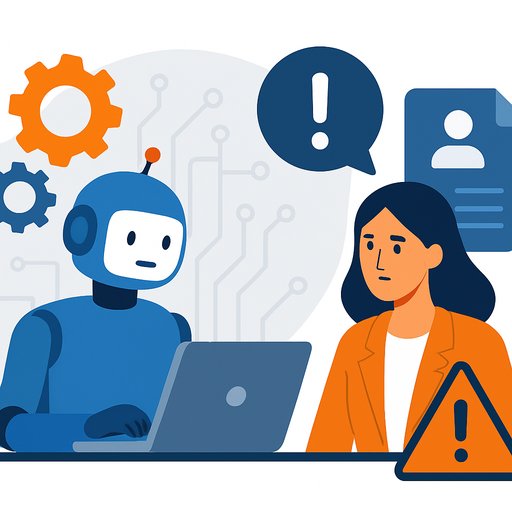AI's Hidden Legal Risks HR Leaders Can't Ignore
AI is now embedded in everyday HR workflows-screening candidates, flagging performance issues, shaping schedules, even informing terminations. The upside is real: speed, precision and cost savings. The risk is equally real: bias, privacy violations, copyright issues and over-surveillance that erode trust and trigger legal exposure.
At a recent SHRM Puerto Rico conference in Ponce, attorneys Sylmarie Arizmendi and Alberto J. Bayouth-Montes urged HR leaders to pair innovation with strong governance. Pilot first, move gradually, and never put critical employment decisions on autopilot. As Arizmendi cautioned, the higher the stakes, the higher the risk of getting it wrong.
The legal risks HR needs to plan for
Algorithmic bias sits at the center. If your data reflects past inequities, your model can reproduce them-quietly and at scale. The "black box" effect compounds the problem: if you can't explain how a decision was made, you'll struggle to defend it.
Data practices are another fault line. Many AI tools process biometric, behavioral or sensitive personal information. That raises privacy and surveillance concerns that can lead to regulatory scrutiny and employee pushback. For reference, regulators have issued clear warnings about AI misuse and discrimination risk: see guidance from the U.S. EEOC on AI and employment bias and the FTC on fairness in company AI use.
Over-automation in high-stakes areas-hiring, promotion, discipline, termination-invites trouble. These calls require context and discretion that pure pattern-matching often misses. Third-party vendors add another layer of risk if contracts lack audit rights, clear data-use limits or accountability for harmful outcomes.
How bias creeps into AI
- Historical data bias: Models trained on skewed outcomes repeat those patterns in recommendations and scores.
- Programming bias: Homogeneous teams make blind spots more likely to seep into model design and feature choices.
- Confirmation loops: Systems learn from their own outputs, reinforcing early mistakes and widening gaps over time.
- Representation gaps: Underrepresented groups get fewer data points, which degrades accuracy and fairness for those employees or candidates.
Open vs. closed AI: what HR should share (and what it shouldn't)
Open systems (like public chatbots) can retain prompts and use them for future training. Treat them as a third party: never paste employee data, internal metrics, health information, or anything you wouldn't send outside the company. Closed, proprietary systems can restrict data sharing, but still need strict access controls and audits.
- Do: Use scrubbed, synthetic or minimal datasets; enable enterprise privacy controls; set retention limits.
- Don't: Feed resumes, personnel files, performance notes, or investigation details into open tools.
Practical policy moves for HR
- Keep humans in the loop: Make AI advisory, not final. Require human review for hiring, promotion, pay and termination decisions.
- Run pilots first: Start small, compare AI results to human benchmarks, and monitor for drift before scaling.
- Fight bias at the source: Use diverse teams, representative data and documented fairness checks. Re-test after updates.
- Protect privacy: Encrypt data, minimize collection, set access controls and conduct periodic audits aligned with applicable laws.
- Vet vendors hard: Demand transparency, testing reports, bias and privacy assurances, audit rights and clear incident response terms.
- Set guardrails: Publish an ethical AI use policy, log AI-assisted decisions, and train managers and recruiters on approved tools and red lines.
Bottom line for HR
AI can improve HR operations, but it can also quietly harden bias and weaken trust if left unchecked. Choose tools with care, validate them in your context and keep humans accountable for the final call. That's how you get the benefits without inheriting avoidable risk.
If your team needs structured upskilling on safe, effective AI use in HR, explore curated options here: AI courses by job.
Your membership also unlocks:






